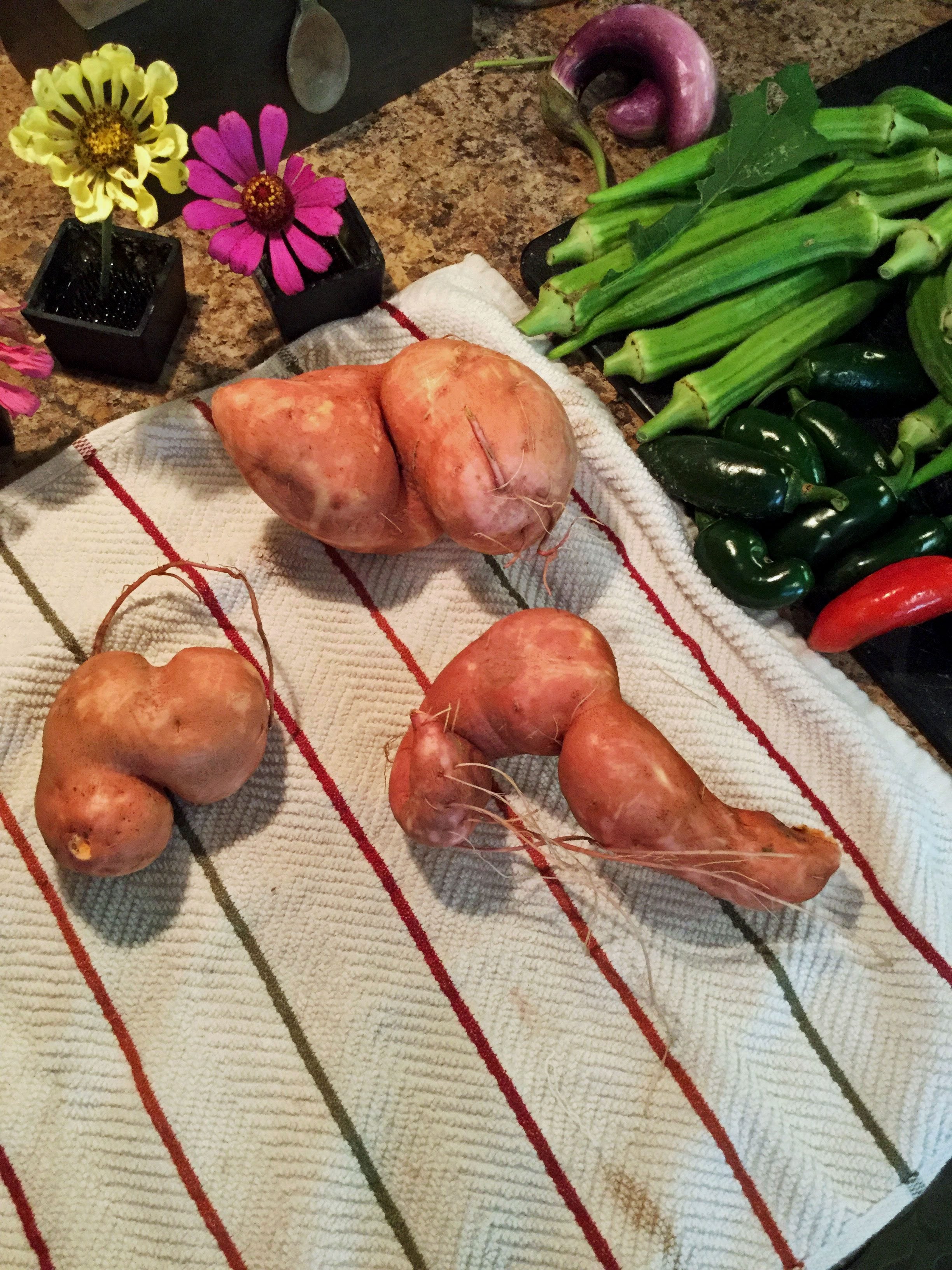Knobby Deformed Potatoes: Why Potato Tubers Are Deformed

If you have ever grown potatoes in the home garden, it is very likely that you have reaped some interestingly shaped spuds. When potato tubers are deformed, the question is why, and is there a way to prevent knobby deformed potatoes? Read on to learn more.
Causes of Knobby Potatoes
In order to figure out how to prevent oddly shaped potatoes, it's necessary to understand the causes of knobby, deformed potatoes. Really, it's very simple. Any stress on the developing tuber will cause it to become ill-formed. What kinds of stresses? Well, temperature fluxes and improper planting are two major factors. In the case of temperature, high temps cause field stress. Generally, the longer the tuber variety, the more susceptible it is. If you live in an area where temperatures are routinely high, be forewarned. Avoid planting the longer tuber varieties and irrigate sufficiently during the early growth phase. Also, don't worsen the stress by adding too much nitrogen. To allow proper development of the spuds and avoid potato tubers that are deformed, it is important to have smooth clod free soil with space between each plant. You want to foster long (2-4 inch/5-10 cm.) stolons, the roots attached to the tuber. These stolons absorb all the nutrients and water necessary for growth. When the stolons are constricted, twisted, diseased, or under stress, the plant cannot absorb the necessary nutrients to engender smooth, unblemished potatoes. Short stolons constrict the growth of the tubers and cause them to compete for space, resulting in knobs on potatoes and other malformations. Short stolons also foster disease such as rhizoctonia, which will cause the plant to lose its first set of tubers and the successive sets will be severely deformed. All that being said, an unusually long stolon may also result in malformed spuds. Overly short or unusually long stolons cause a hormonal imbalance and affects the potato's overall shape. Knobs on potatoes are also due to stimulated growth on one or more of its eyes. The size of the knobs depends on the stage of growth the tuber is in when a stressor occurs. High temps are the cause for this stimulated growth.
How to Fix Deformities in Potatoes
As mentioned, plant the tubers in clod free, aerated soil. If you live where it is routinely hot, plant the correct variety of potato -- short, small spuds. Temps above 80 F. (27 C.) lower the supply of carbohydrates to the tuber and decrease cell division, resulting in malformed potatoes. Irrigate regularly at the first growth stage and avoid excess nitrogen. Allow plenty of room between plants so they can develop long stolons with wide diameters to better absorb nutrients.
Gardening tips, videos, info and more delivered right to your inbox!
Sign up for the Gardening Know How newsletter today and receive a free copy of our e-book "How to Grow Delicious Tomatoes".

Amy Grant has been gardening for 30 years and writing for 15. A professional chef and caterer, Amy's area of expertise is culinary gardening.
-
 Looking For Plants To Give You The Soft And Fuzzies? Try These 5 Fuzzy Leaf Plant Options
Looking For Plants To Give You The Soft And Fuzzies? Try These 5 Fuzzy Leaf Plant OptionsLovers of texture, drama, silver foliage and tactile plants will adore these special sensory garden additions. These fuzzy leaf plant options will leave you all aglow
By Susan Albert
-
 Get Ready For A Summer Of Hummers! Grow These Full Sun Hummingbird Plants and Flowers
Get Ready For A Summer Of Hummers! Grow These Full Sun Hummingbird Plants and FlowersIf you’re lucky enough to enjoy a sunny backyard, make sure you are maxing out on your pollinator opportunities and grow these full sun hummingbird plants and flowers
By Tonya Barnett